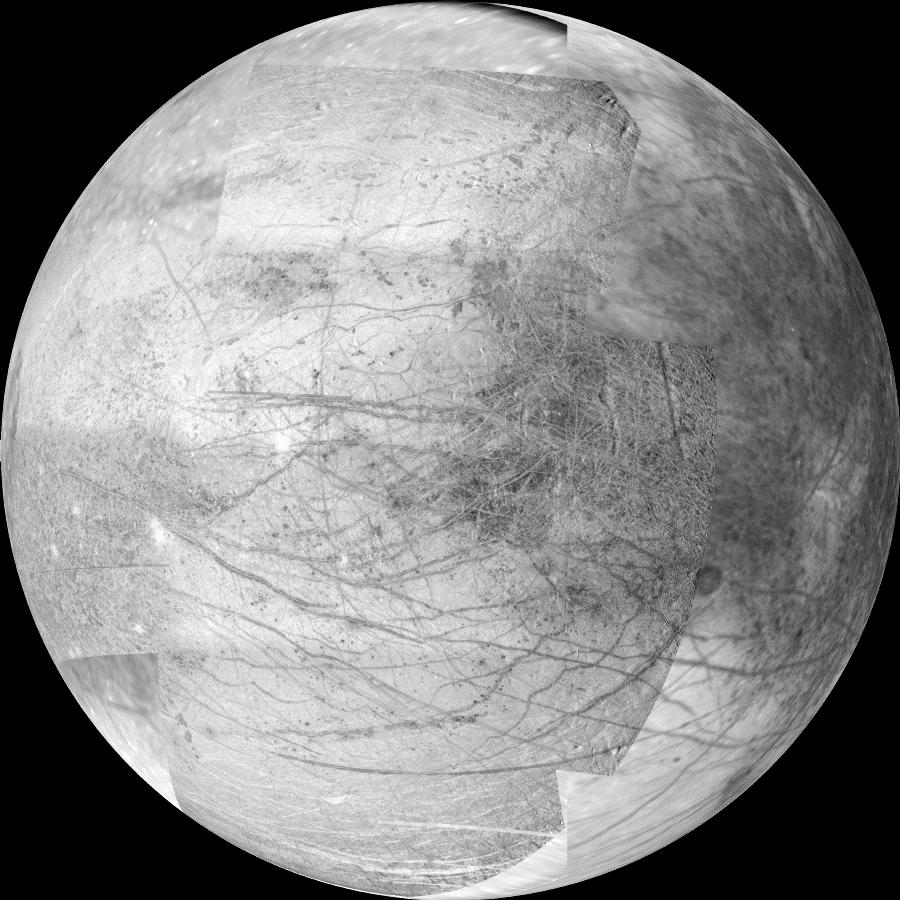All Resources
Europa's Jupiter-Facing Hemisphere

This 12-frame mosaic provides the highest resolution view ever obtained of the side of Jupiter's moon Europa that faces the giant planet. It was obtained by the camera onboard NASA's Galileo spacecraft on Nov. 25, 1999 during the spacecrafts 25th orbit of Jupiter.
The new images have resolutions of about 0.6 miles (1 kilometer) per picture element. Lower resolution context was provided by images acquired during earlier Galileo orbits. In the earlier images, the resolution is 4 and 8 miles (7 and 13 kilometers) per picture element, respectively.
Numerous linear features in the center of the mosaic and toward the poles may have formed in response to tides strong enough to fracture Europa's icy surface. Some of these features extend for over 900 miles (1,500 kilometers). Darker regions near the equator on the eastern (right) and western (left) limb may be vast areas of chaotic terrain. Bright white spots near the western limb are the ejecta blankets of young impact craters.
North is to the top of the picture and the sun illuminates the surface from the left. The image, centered at 0 latitude and 10 longitude, covers an area approximately 1,550 by 1,860 miles (2,500 by 3,000 kilometers). The finest details that can discerned in this picture are about 1,550 by 1,860 miles (about 2 kilometers) across. The images were taken by Galileo's camera on Nov. 25, 1999 when the spacecraft was 58,000 miles (94,000 kilometers) from Europa.


